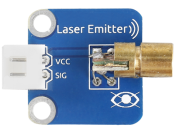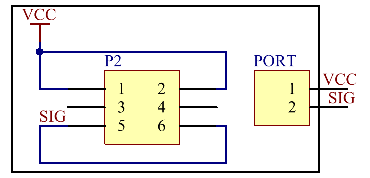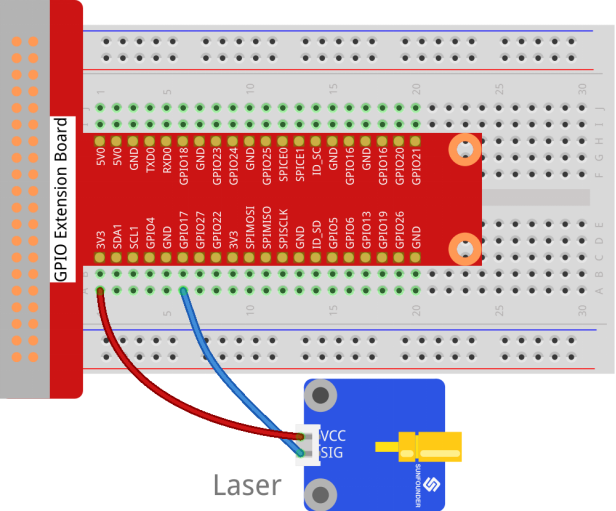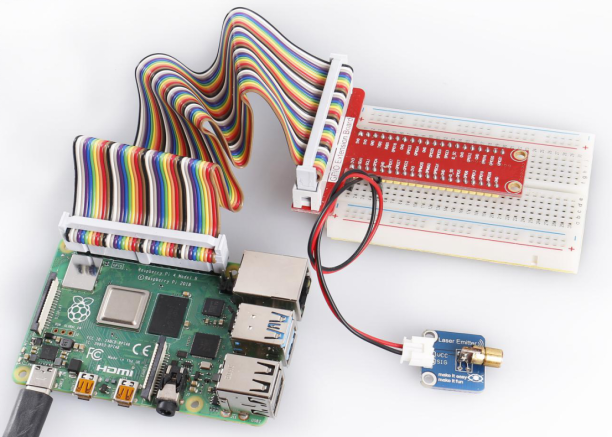Introduction
Laser is widely used in medical treatment, military, and other fields due to its good directivity and energy concentration.

Required Components
– 1 * Raspberry Pi
– 1 * Breadboard
– 1 * Laser Emitter module
– 1 * 2-Pin anti-reverse cable
Experimental Principle
A laser is a device that emits light through a process of optical amplification based on the stimulated emission of electromagnetic radiation. Lasers differ from other sources of light because they emit light coherently.
Spatial coherence allows a laser to be focused to a tight spot, enabling applications like laser cutting and lithography, and a laser beam to stay narrow over long distances (collimation), enabling applications like laser pointers. Lasers can also have high temporal coherence which allows them to have a very narrow spectrum, i.e., they only emit light of a single color. And its temporal coherence can be used to produce pulses of light—as short as a femtosecond.
The schematic diagram of the module is as shown below:

Experimental Procedures
Step 1: Build the circuit.
| Raspberry Pi | GPIO Extension Board | Laser Emitter Module |
| 3.3V | 3V3 | VCC |
| GPIO0 | GPIO17 | SIG |

For C Users:
Step 2: Change directory.
cd /home/pi/SunFounder_SensorKit_for_RPi2/C/05_laser/Step 3: Compile.
gcc laser.c -lwiringPiStep 4: Run.
sudo ./a.outFor Python Users:
Step 2: Change directory.
cd /home/pi/SunFounder_SensorKit_for_RPi2/Python/Step 3: Run.
sudo python3 05_laser.pyNow you can see the module send out Morse signals.
Note: DO NOT look directly at the laser head. It can cause great harm to your eyes. You can point the laser beam to the table and see the light spot flashing on the table.

